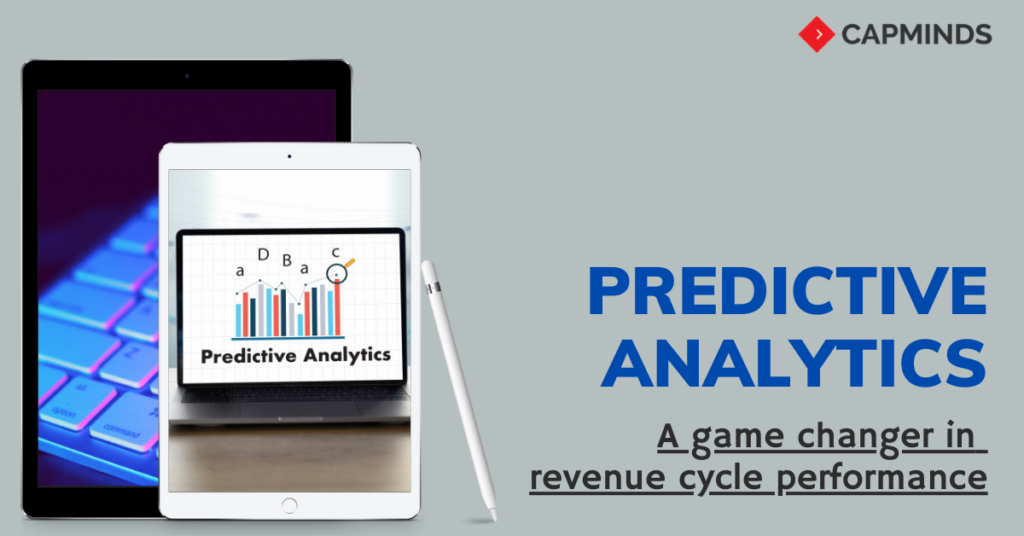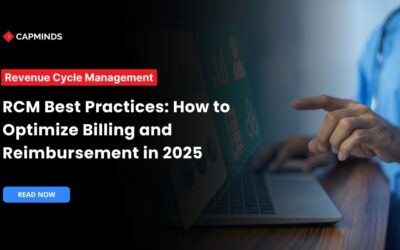Predictive Analytics: A Game-Changer In Revenue Cycle Performance
The healthcare providers believe that their organizations could save 15% or more over the next five years with the help of predictive analytics. The better area where predictive analytics can drive good saving is with revenue cycle performance.
Predictive analytics is a game-changer in healthcare revenue cycle performance because it can be used to forecast revenue and correct issues that impact revenue before they occur. The insights gained also position healthcare organizations to streamline revenue cycle workflows, educate staff and clinicians on best practices, and proactively address issues with payers that are holding up payment.
How can hospitals and health systems leverage predictive analytics to boost revenue cycle performance? In this article, we explain to you the four best approaches on how predictive analytics helps you.
1. Providers Can Review Payer-Specific Payment Behavior
With predictive analytics, providers can review payer-specific payment behavior by CPT code to determine how long it will take for a specific claim to be paid and even the day and time the payment will arrive. It’s an approach that can predict the date of remittance for claims with a high degree of accuracy.
Machine-learning innovations such as this empower providers with the knowledge they need to more effectively manage revenue cycle operations, strengthening the organization’s financial health.
2. Identify Errors in revenue cycle processes.
One of the biggest challenges facing providers occurs when eligibility checks are performed during patient registration but aren’t rechecked before claim submission. When this happens, providers run the risk that the claim will be denied because a patient no longer has coverage from a specific payer—and the issue may not be detected for a month. It’s a process breakdown that results in decreased cash flow and increased administrative time and expense.
Predictive analytics can identify breakdowns in revenue cycle processes that are making a deep impact on financial health—and direct behaviors that improve accuracy and efficiency. The right predictive analytics partner will bring these trends to your attention in their earliest stage.
RELATED: #1 GUIDE TO PREDICTIVE ANALYTICS IN HEALTHCARE
3. Predict And Eliminate Claim Denials Before They Occur
Each year, the nation’s largest healthcare organizations manage $5 to $10 billion in claims—and nationally, 9 percent of claims are initially denied by payers. For the average hospital, $5 million in payments are at risk of being denied each year. And while 63 percent of denials can be recovered, it costs about $118 per claim in administrative costs to capture the monies owed.
Predictive analytics positions providers to predict which claims will be denied before they are submitted. This enables staff to correct claims before submission, increasing clean claims rates. Providers also can use predictive analytics to more effectively manage work related to denials, focusing staff attention on high-value denials the system has a strong chance of overturning.
4. Supercharge Claims To Edit
One emerging capability is the use of predictive analytics and machine learning not just to apply coding edits and payer-specific rules for claims adjudication, but also to anticipate changes in payer rules before a claim is denied or delayed. There are about 60,000 claims edits currently available, many of which are specific to certain payers. These rules are complex and inconsistent from one payer to the next, and they change rapidly.
In the next five years, we’ll see innovations around machine learning in the healthcare revenue cycle space, including the ability to use machine learning to identify changes in payer rules that may not be known by providers and bring them to the attention of staff. Currently, this process still requires professionals who understand the intricacies of claims edits to evaluate these alerts and determine the next steps.
Summary
Predictive analytics is the future of healthcare. Eighty-five percent of healthcare leaders say their organizations use predictive analytics or will do so within the next five years. Meanwhile, more than half of leaders anticipate their organizations will dedicate 15 percent or more of their budget to predictive analytics.
As your organization considers its predictive analytics game plan, it’s important to take steps to ensure you are gaining actionable insight. Start by identifying the business case for predictive analytics, then, work with a data scientist skilled in revenue cycle analysis to determine how data will be collected and formatted for meaningful analysis.
Additionally, the right vendor will not only help you use predictive analytics to solve the revenue cycle business challenge at hand but will also identify trends your organization has not yet uncovered and work with.




